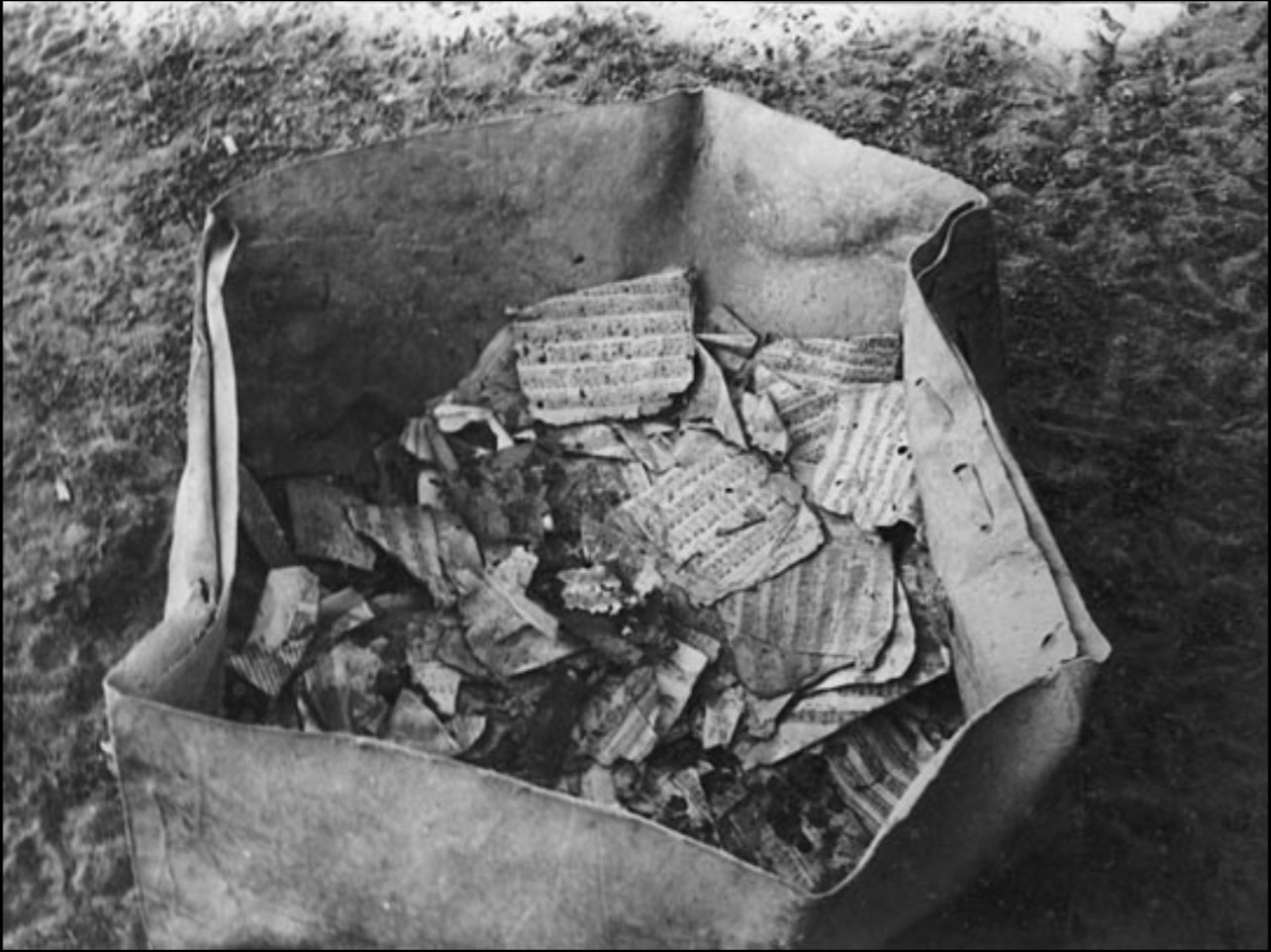
News
Director Seeks Donations for
Documentary With Jesuit Ties
Here’s your chance to invest in a movie.
For nine years, Scott Loudon has been developing Anónimo, a documentary film about thousands of pages of Baroque music found at former Jesuit missions in the jungles of Bolivia.
These places inspired the 1986 feature film The Mission starring Robert DeNiro, but Anónimo is a very different project. It will focus, in part, on Swiss architect Hans Roth’s 1972 discovery of a leather satchel in the choir loft of the Mission of San Rafael de Velasco.
Roth had been there to preserve the building’s roof, but when he opened the bag, he found 5,000 pages of preserved classical music from the 1700s, most of it unsigned. The discovery was dubbed “Anónimo,” in reference to the unknown composer.
After the initial discovery, Polish priest and musicologist Fr. Piotr Nawrot visited the area out of curiosity. Indigenous leaders entrusted him with 9,000 more pages of Baroque-era music written by Jesuits and local composers, and he has spent decades restoring it.
“I hope Anónimo will not only glorify God but also help provide instruments, education and opportunities for young Bolivian musicians to grow in this sacred tradition,” says Loudon, a musician, audio engineer and documentary filmmaker. “Much of my life has been devoted to projects that bring healing and hope through the power of music.”
Christian Roth, the son of the renowned architect who found the music, will serve as the film’s guide through the remote missions of Bolivia. The soundtrack will include at least a dozen Anónimo musical pieces performed live inside the otherworldly Jesuit missions of Bolivia.
The film will also tell a living Indigenous story through the eyes of a young Bolivian violinist named Crisanto. His life took an unexpected turn when he received a violin and began to play the music of his ancestors.
Investing in the film will help Loudon build cultural relationships with Bolivian partners; film, edit and colorize the movie; and market the final product.
To make a tax-deductible donation, visit www.anonimo-documentary.com.
Send non-tax-deductible contributions to: www.givesendgo.com/anonimo.
Contact Loudon directly:
anonimodocumentary@gmail.com
(248) 705-8010.
A Fond Farewell
to Dede Crowley
Dede Crowley worked more than 33 years in Omaha for the Jesuits, including six for the Midwest Province.
After more than six years as a major gifts officer based in Omaha for the USA Midwest Jesuits, Diane “Dede” Dougherty Crowley has retired. The Society of Jesus thanks her for her dedicated service, especially the relationships she built with friends of the Jesuits in the city and region she knows so well.
“It has been my privilege to be a part of the Midwest Province advancement team, which is responsible for expanding support of the Jesuits—the men who so selflessly serve others not just here in the Midwest but throughout the United States and beyond,” Crowley says. “I will continue to be inspired by the Jesuits. We are blessed to witness their dedication to service. Hopefully, we are also encouraged to follow their example.”
Before working for the province, Crowley served the Jesuits for more than 27 years in Omaha, most recently for two and a half years as principal gifts officer at Creighton Preparatory School. Before that, she worked in similar roles, and others, over the course of 25 years at Creighton University, her alma mater.
“Dede was a selfless and dedicated member of our advancement team, and she truly loves the Jesuits,” says Quentin Maguire, vice president for advancement and communications & provincial assistant for the Midwest Province. “We wish her the best in her well deserved retirement.”
Solar Projects Complete
in Midwest Province
Solar panels at the Midwest Province office in Chicago supply 49% of the building’s electricity.
After more than two years, the rooftop solar panel installation project at the Midwest Jesuits Province office in Chicago is complete and operational. The new system produces 109,000 kWh of electricity, which replaces 49% of the building’s electricity consumption, saving the province $15,000 per year.
Other Midwest Jesuits facilities also benefit from solar power.
At Arrupe House Jesuit Community in Milwaukee, recently installed panels produce about 56,000 kWh of electricity, covering more than 98% of the facility’s electricity. The project is expected to pay for itself in seven years and seven months.
“Arrupe House is the first Jesuit community in the United States to go 100% solar,” says James Erler, provincial assistant for justice, ecology and reconciliation for the Midwest Province. “This isn’t just the ethical thing to do. It’s also fiscally smart and will save us a lot of money in the long run.”
Since January 2025, the 322 rooftop solar panels at Chicago Jesuit Academy (CJA) have supplied the tuition-free primary and middle school with more than 110,000 kWh of electricity. As of mid-September, savings totaled around $3,000.
All three projects were paid for with federal, state and utility incentives along with the support of John and Susan Dewan, co-founders of Dewan Solar and The John & Susan Dewan Foundation.
A Family Legacy from Germany to South Dakota
Cornelia Buechel-Stieler traveled from Leipzig, Germany to St. Francis Mission among the Lakota in South Dakota to witness the legacy of her great-great-uncle, Fr. Eugene Buechel, SJ.
A little more than 150 years ago— Oct. 20,1874, to be exact—the future Fr. Eugene Buechel, SJ, was born in Thuringia, Germany. The youngest of 10 children, he entered the Society of Jesus in October 1897, and in 1900 the Jesuits sent him to the United States to continue his studies.
He would become an anthropologist and linguist, giving 49 years to the Lakota on the Pine Ridge and Rosebud Indian Reservations in South Dakota. This summer, his great-great-niece, Cornelia Buechel-Stieler, traveled from Leipzig, Germany to South Dakota to witness his legacy, which lives on in the Buechel Memorial Lakota Museum at St. Francis Mission among the Lakota.
Father Buechel mastered the Lakota language as few have. He averaged 265 private instructions in homes each year. He converted 500 people, cared for a dozen mission camps and compiled the Grammar of Lakota, which was published in 1939, and collected thousands of words for a Lakota-English dictionary.
In addition, Fr. Buechel cataloged more than 300 native plant specimens, which contributed significantly to the preservation of Lakota ethnobotany. For many years, he worked on a collection of genuine Indian articles, which now fills the museum.
Born in East Germany during the Cold War, Buechel-Stieler and her family were separated by the Berlin Wall. She grew up under a regime that restricted religious practice and limited contact with family outside East Germany. It wasn’t until the 1989 fall of the Berlin Wall that she could reunite with her loved ones, explore her faith openly and reconnect with her family history. In South Dakota, she was moved to see photographs of relatives she had never met.
She also visited with Eugene Iron Shell Jr., a St. Francis Mission board member whose family has a profound connection to Fr. Buechel.
“Fr. Buechel baptized my dad in 1929, as well as most, if not all, of his 10 siblings,” Iron Shell says. “So my grandma named him Eugene. Probably thousands of people were baptized by him. He was quite a man, and he had a lot of dedication and love for the Lakota people.”
They called him Wanblee Sapa, or “Black Eagle,” even after his black hair turned white. He died on October 27, 1954, in O’Neill, Neb.
To learn more about the Buechel Memorial Lakota Museum or support its mission, visit www.sfmission.org or call (605) 747-2361.
IN THIS ISSUE
ON THE COVER
Saint Ignatius College Prep senior Courtney Beatty (’26) at The Narrows in Zion National Park as part of the Chicago high school’s On Holy Ground summer course.
Photo: Fernando Fonseca





